Genre: Other Developer: Japan System Supply Publisher: Sega Ent. Players: 1 Released: 1991
House of Tarot itself is not a video game. It’s a digital Tarot deck on a Game Gear cartridge, which lets us look at the cards on the 3.2-inch screen. That’s it. In case any readers are unfamiliar with Tarot cards and what they are, Tarot is a deck of 78 cards, covered with drawings and commonly associated with fortune-telling. If we think of the typical image of a fortune-teller, it’s probably a cartoon gypsy old lady with a big nose and a crystal ball, and Tarot cards on the table in front of her.
While most people might not be interested in Tarot cards, they’re believed to be the roots of modern-day playing cards, which almost everyone has used occasionally, throughout our lives. And that history makes Tarot worth looking at, just to better understand those playing cards that are everywhere, from bachelor parties to family picnics and camping trips. Tarot is known to trace back at least as far as the 15th Century when the cards were hand-painted for the royalty of northern Italy and France. However, general playing cards are known to trace back slightly earlier, to the late-14th Century, which means that Tarot might also trace back to the 14th Century, alongside playing cards. The two types of cards might have even been one-and-the-same, in the 14th Century. (Even today, Europeans sometimes use Tarot cards as an optional form of playing cards.) It’s impossible to know which type of cards existed absolutely first, but either way, modern playing cards seem obviously based on medieval Tarot. For example, The Joker in playing cards seems obviously based on The Fool in traditional Tarot.
There are countless different versions of Tarot sold today in any bookstore, with all different themes for the illustrations. Apparently, any theme works, so there’s Tarot based on cats or nature, or based on angels or ancient Egypt. I’ve even seen a Tarot deck made of snowman drawings! Anyway, there’s only one standard Tarot deck: The Rider-Waite deck, which gave Tarot its basic formal structure in 1910. This is the same Tarot we can consult with our Game Gear, and it’s also the same Tarot that we typically see in the media, like those TV commercials for psychics who want to read your fortune over a 1-900 number.
Most of the graphics in the House of Tarot are the full-screen images of the cards themselves, but beyond that the title wraps up the package with some slightly ridiculous anime artwork. The title screen shows a skull of a deer or something that has nothing to do with Tarot, and which might give an overly negative impression. Thankfully, it’s balanced out by cheerful red roses on the sides, and above the skull is a naked woman with blue hair and angel wings. These images really don’t come from the Tarot (unless there’s supposed to be some reference to the real images, which is not obvious), but the title screen does give the impression of embracing nature and contemplating strange artwork while contemplating the mysteries of life – themes which are consistent with Tarot, despite the title screen’s images seeming unrelated.
Pressing start brings us to the front door of the house, which is funny that the title’s name is so literal that it simulates visiting an actual house. It looks cheerful with flowers and trees on the sides, and there’s pleasant music. A second picture shows the door up close to simulate walking up to it. Upon entering, we choose one of three anime-style fortune tellers to give us a Tarot reading. There’s a sexy babe fortune teller, a second woman wrapped in a purple shroud, and a wise old man. Whoever we choose will then be seen sitting in front of us. The default choice is the sexy babe, who is probably the most interesting choice anyway. A screen of Japanese text comes up that I eventually realized is for choosing our astrological sign. Each choice has the universal symbol of the sign, like Aquarius having the symbol of waves, and numbers on the bottom show the birthdays for each sign. For example, Aquarius’ birthdays are shown as “1/21-2/19,” meaning January 21st through February 19th.
Finally, we’re looking down on the table, and this screen has the last bit of unique graphics, aside from the content of the Tarot deck itself. The fortune teller’s face shows in the top-right and we don’t see her hands, but the cards move as if she is laying them down, face-down. First the cards appear in the center in a circular pattern, as if it’s her way of shuffling them. Then the cards spread across the table, and so 22 of them cover the table (there’s no significance to the number 22 here, it’s just how many cards she lays across the table).
Now we have the nice option of shuffling the cards ourselves. For context, a real life Tarot reading is based on the idea that the cards might give us answers if we ask questions while shuffling them, and then use our intuition to feel when we’ve found the right cards to answer our questions. So, it’s believed that our intentions (our question asking and shuffling) and our intuition (to feel out the right cards) are the reasons why Tarot is supposed to work. House of Tarot offers us an equivalent of that. We can shuffle the cards by holding button 2, as long as we want to. We can also stop and shuffle them some more, as many times as we want to. This is giving us the chance to recreate the real life ceremony of asking our questions while shuffling and using our intuition to feel when it’s right to stop shuffling and pick our final cards. Button 1 prompts our fortune teller to finally pick seven of those 22 cards, and so her pick is influenced by our previous card-shuffling.
Seven cards are not a common number for a Tarot reading, nor is the layout common. Six cards are placed onto the points of a hexagram, and the seventh card goes into the center of the hexagram. This arrangement is not a symbol that’s part of traditional Tarot, which actually contains five-pointed stars, but whatever. Tarot is not an exact science; it’s gazing at strange pictures and imagining what hidden messages they might hold for our life. Once our seven cards are placed on the hexagram, the screen goes through the full-screen image of each card. We can look at each card for as long as we want to, as it stays onscreen until we hit button 2.
House of Tarot was a Japanese-only release, so there is Japanese text that we won’t be able to read. But the cool thing is that we don’t need to read the text to consult the cards, whose images are universal. Many books and websites offer basic explanations of each card. There are four suits, like modern playing cards, with different numbers and meanings for each card in each suit. The Game Gear shows each card as a picture with a Roman numeral, and we know the suit from the image. For example, the traditional image of the card symbolizing heartbreak has a picture of three swords stabbing a heart. So, it’s obviously the Three of Swords, without the title needing to be spelled out. In addition to the four suits, the Major Arcana is a separate group of 22 cards which represent the most major steps of life, while those four suits (the Minor Arcana) are 56 cards which represent the smaller details of life. House of Tarot is impressive for managing to clearly portray all 78 cards, using traditional images that are simplified for the small screen.
After we look at our seven cards, the reading is over, unless we choose to look again at any of them. Most people might dismiss this experience as meaningless because all we can do is look at seven cards! But that’s what Tarot is; looking at cards and daydreaming about them. So, House of Tarot gets credit for recreating that experience. This title also gets credit for being vaguely educational of the Tarot, because although its imagery is simplified we’re still seeing the same basic images from hundreds of years ago on our Game Gear.
For those unfamiliar with Tarot, visiting the House of Tarot should be an interesting glimpse into the wild occult roots of those plain, boring playing cards that are probably a staple of your family reunions. And for those already familiar with Tarot, this cartridge offers an interesting version of the Rider-Waite deck, simplified but also splashed with bright colors, so it’s enjoyable to sift through it. And for those inclined to think that there could be a mystical meaning in using Tarot cards to find truth about our life or our future, there should be a similar amount of mystical potential in using a physical deck, compared to a digital version. Both seem about equally able (or unable) to offer mystical insights into our life!
House of Tarot might be hard to find as a Japanese exclusive but if possible, this strange title should still be checked out in some way or another. Who knows? We might even find out something amazing about our future. Grab a quartz crystal to keep the energy pure and try to imagine what those Tarot cards might be telling you!
The scoring might be tricky for this title, as it’s a non-game. We could criticize its lack of English beyond the title-screen; however, the cards are still easily identifiable, and we can look up their meaning easily. This title gets credit for accurately showing the Rider-Waite Tarot, which means it has some historical and educational value. Also, there’s Japanese text because this title wasn’t intended to leave Japan, as Tarot is one of those things that certain people find objectionable. Sega was smart to avoid any controversy this title could have easily seen if released worldwide, especially in the US. For all those reasons then, the Japanese-only text is not a criticism of this title, and it’s completely understandable.
The cards probably look as good as they can in the confines of showing the entire card in one screen: That also requires their imagery to be very simplified just to fit in one screen. I thought about it, and I guess the only way to show more detail would have been to additionally show blown-up images of each card, bigger than the screen, so we’d move around the card and see the greater detail. Admittedly, that would be much more content than we have here and beyond the scope of this title. The developers’ main goal was to recreate each Tarot card in one screen, and they were successful. Beyond the Tarot’s images, the title screen and the anime fortune tellers are a bit ridiculous, but that’s relatively unimportant, since the important thing is that the Tarot itself is accurate, thankfully. Still, it’s a shame that the title screen is full of unrelated images when there’s endless real imagery that could have been used. Likewise, the nontraditional layout and number of cards used seem slightly lacking, when House of Tarot could have just used a traditional layout and number of cards.
Regardless such criticisms, all the artwork is quite good, even for the parts that can be criticized. For example, the hexagram layout still looks decent enough as a display of Tarot cards on a table. And while the sexy fortune teller is ridiculous, she looks good too. Also, while each song is not usually heard for very long (unless we choose to pause at some step), the soundtrack is great, boasting several songs that are very cheerful. Both the graphics and the music are quite good overall. The sound effects are minimal but fitting. There’s a slight sound of the cards shuffling, and when we select each card, there’s a classic 8-bit sound effect of selecting something. For the most part, the changing music takes the place of sound effects, as the songs change according to what we are doing, from walking up to the house, to choosing a fortune teller, choosing our astrological sign, shuffling the cards, looking at each card, and finally seeing the house again as we leave. The three fortune tellers also each have their own unique song that plays before a reading, and then plays again while we look at our cards.
For any Tarot fans, who don’t mind an unusual layout and number of cards, House of Tarot does recreate the experience of consulting the Tarot, and the Game Gear at least has the benefit of everything being in one solid piece, rather than 78 cards which can fall and get lost. So, it recreates the traditional form of divination with greater portability than actual Tarot cards. House of Tarot deserves a solid rating for recreating the ceremony, and the historical imagery of the Rider-Waite Tarot on Game Gear.
Score: 8 out of 10

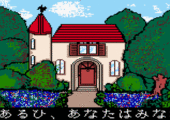
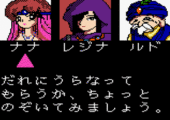
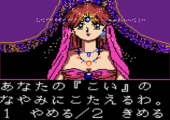
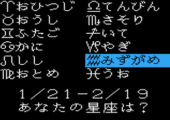
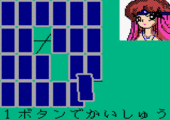
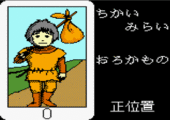
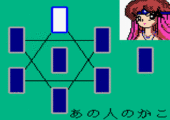
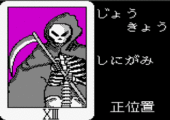
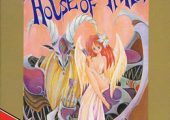
Recent Comments